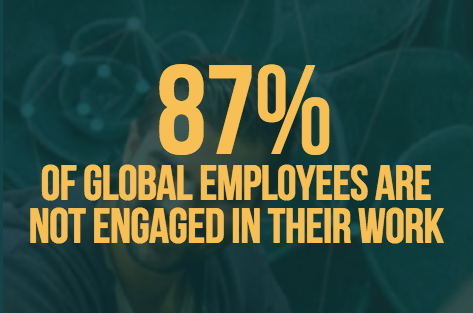

I don’t know about you, but when I read that stat, disbelief crossed my mind. How can 87% of people not be engaged in their work? That means that just 13% are engaged! That can’t be true.
Fuelled by a desire to get to the truth, the Kamwell and Raw Energy teams got together and set about speaking to UK-based HR leaders from across multiple industries and organisation sizes to find out their views on Workplace Wellbeing. We had so many questions!
Q. Is it all hype, or can truly enlightened business leaders positively impact the wellbeing of their employees creating a ripple effect through their business and communities?
Q. What does success look like?
Q. How much are companies investing in wellbeing?
Q. What activities are driving this investment?
Q. Should businesses have wellbeing KPIs?
Q. How rosy is the future for employees?
500 interviews and 12 months later, we glanced at the data before us. The insights both validated our beliefs, but also surprised us.
We learned that:
- Workplace Wellbeing is definitely becoming much more mainstream with more and more HR and business leaders prioritising the wellbeing of the employees as a strategic area of investment. Our day-to-day work as consultants and programme creators validated this too.
- Those companies who put humanity, wellbeing and a sense of purpose at the forefront of their business enjoy many benefits: increased retention, cheaper recruitment.
- Mental health – anxiety, stress and depression are by far the most important priority for workplace leaders today.
- There’s a long way to go to have truly thriving workplaces as the norm, less than 30% of our respondents fit into this category today. There are several drivers of the current situation that need to be changed:
- Wellbeing is underinvested in. Given the importance of human energy and wellbeing, the amount invested by businesses in this critical area is laughable, with ~$21k being a big spend, excluding employee volunteer time.
- Only 7% of companies measure impact of their wellbeing activities, something which we predict will look very different a few years from now once the discipline of people analytics becomes more accepted. What gets measured, gets managed and what gets managed gets invested in.
- Accountability is very poor with only 11% of organisations claiming to have introduced employee wellbeing KPIs, holding their staff accountable for their own wellbeing. We expect to see healthy eating, movement and sleep KPIs on PDP appraisal forms around the globe before too long.
In the digital age, as machine learning and artificial intelligence become centre-stage, it’s time to get back to creating human-centred organisations and true self-generating workplace energy.
Everyone wants wellbeing and good health and with millions of people employed around the world, the opportunity for businesses to educate and support their staff to upgrade their habits and put a dent in the negative chronic disease trends we are witnessing around the world, has never before been greater.
- Take action now and Download a FREE copy of ‘Human Centred Organisations: the current state of employee wellbeing and its impact on business’
